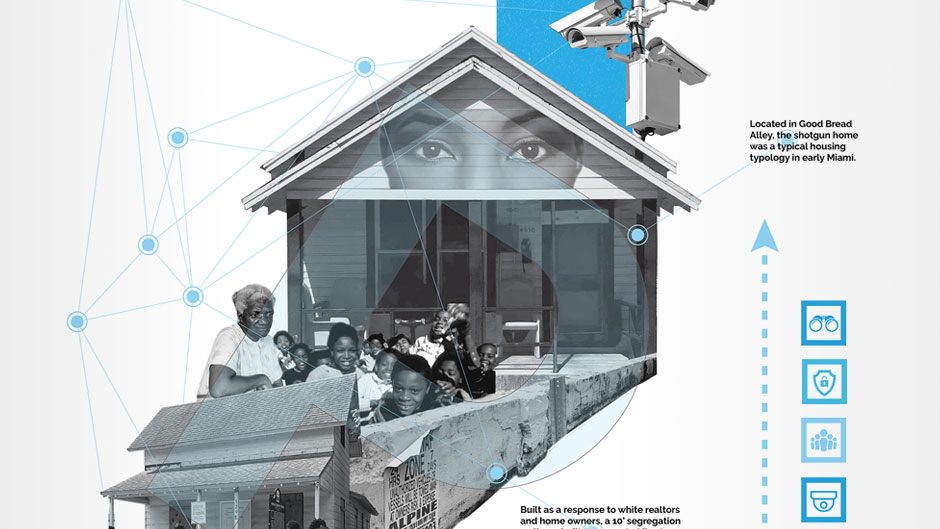His work has included the use of the front porch in the Black community as a gathering place to not only see other members of the community and be seen, but also as utilitarian, safe spaces that were often used as makeshift schools, barbershops, and game parlors for many during the Jim Crow era.
Some of his work will be exhibited at The Museum of Modern Art's (MoMA) fourth installment of the Issues in Contemporary Architecture series, “Reconstructions: Architecture and Blackness in America,” an investigation into the intersections of architecture, Blackness, and anti-Black racism in the American context. The exhibition opens on Feb. 27.
“I am very happy and humbled to be included with a group of very talented practitioners,” Barnes said. “A show like this has never happened in MoMA’s history.”
The exhibition will examine contemporary architecture in the context of how systemic racism has fostered violent histories of discrimination and injustice in the United States. Such conditions have structured and continue to inform the built environment of American cities through public policies, municipal planning, and architecture, with specific repercussions for African American and African diaspora communities.
“This is a critical milestone for Professor Barnes, to be taking part in such an important event and crucial discussion at a leading cultural institution. It is also a great honor for the School of Architecture to be represented in this forum,” said Rodolphe El-Khoury, dean of the School of Architecture.
For the exhibition, Barnes has created several mixed media collages related to culture in Miami. They celebrate seven different cultures: African Americans, Haitians, Jamaicans, Dominicans, Hondurans, Bahamians, and Trinidadians. All the ethnic groups had African roots. His themes included the three spaces that connected all of them: porches, kitchens, and water.
His collages and drawings included different kinds of porches and stoops used by the different groups to socialize, play, and exchange information.
The exhibition also includes collages of seven different kitchens. Haitian kitchens had signs in Creole, while Spanish words were scattered in those of the Dominicans and Hondurans.
“The history of this country is that Black people work in the kitchen and white people get to eat. So, everything in the show mentions this issue of gender and race inequality and the ways that these spaces promote or oppress marginalized communities,” Barnes said.
But he also wished to portray the joy that cooking emotes, as well as the similarities and differences between the groups. To express that, he created an 8-foot by 3-foot installation that highlighted all the specialty spices used by each group in their cooking: 12 spices for each group.
“There were some basic spices that all groups used,” he said. These included salt and pepper. But there were some that were specific to a group, he added.
“For instance, Haitians use star anise in a Christmas drink that is similar to the Puerto Rican coquito” (a coconut-based alcoholic beverage), he said. “African Americans never use star anise.”
For the water theme, Barnes included a map of Black Miami, which showed the enclaves where African Americans “chose to live or were designated to live by law,” he said.
“This has a lot to do with water because when Miami was first founded, Black people were not allowed to live by the water,” he said. “If you were Black, you could not go to the beach without an ID card. You cannot talk about Miami without talking about water.”
To create his installation, Barnes interviewed dozens of people from the community beginning in October 2019. An archive of all the interviews will be in a website, aspectrumofblackness.com, which will go live at the opening of the exhibition.
Besides the work of Barnes, “Reconstructions” will feature a new video by David Hartt and nine other newly commissioned works by selected architects, designers, and artists. They include Emanuel Admassu, Sekou Cooke, J. Yolande Daniels, Felecia Davis, Mario Gooden, Walter Hood, Olalekan Jeyifous, V. Mitch McEwen, and Amanda Williams. Individual projects will respond to narratives and conditions found in Atlanta, Brooklyn, Los Angeles, Miami, Nashville, New Orleans, Oakland, Pittsburgh, St. Louis, and Syracuse.
“Reconstructions: Architecture and Blackness in America” will be on view until May 31 at MoMA, 11 West 53 Street, New York, New York.

